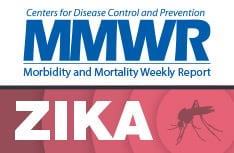Collecting & Submitting Placental and Fetal Tissue Specimens for Zika Virus Testing
General Information
The following information applies to placental (e.g., placental disk, umbilical cord, and fetal membranes) and fetal or infant autopsy tissue collection and submission. For serum, urine, cerebrospinal fluid (CSF), and other body fluid analysis, please see Collecting and Submitting Body Fluid Specimens for Zika Virus Testing.
IMPORTANT: Pre-approval is required prior to submission of any tissue specimens. For pre-approval please contact pathology@cdc.gov.
For guidance regarding scenarios for which Zika virus testing on placental, fetal, and infant autopsy tissues may be considered, please see Update: Interim Guidance for Health Care Providers Caring for Pregnant Women with Possible Zika Virus (MMWR, July 24, 2017).
Healthcare Providers
- Please make sure that your state, territorial, tribal, or local health department has been notified and has received pre-approval from CDC for submission and shipment of specimens before they are collected and sent.
- Institutions with surgical pathology available: Please consult surgical pathology regarding appropriate collection and processing of specimens for Zika virus testing.
- Institutions without surgical pathology available: Please see table below for general guide on collection of tissue specimens for Zika virus testing.
- Specimens should ONLY be sent to CDC from health departments.
Health Departments
- Pre-approval is required prior to the submission of specimens to CDC. Minimum information required for the pre-approval process includes the following:
- Maternal/infant state and specimen identification numbers, maternal age, maternal and infant Zika virus test results (if available), dates of possible maternal Zika virus exposure and locations of exposure (if applicable), illness onset (if applicable), estimated date of delivery, gestational age at delivery, pregnancy outcome, sex of infant, birth anthropometric measurements (head circumference, weight and length) and significant physical exam findings, and any additional testing/imaging.
- Pre-approval and specimen processing can be delayed if required information is missing.
- CDC’s Infectious Diseases Pathology Branch (IDPB) will review the request and provide a pre-approval determination and specimen submission instructions or request additional information. For up-to-date additional information on acceptable specimens, collection, storage and shipment requirements and instructions, please visit CDC’s Infectious Diseases Laboratories Test Directory, Pathologic Evaluation of Fixed Tissues for Possible Infectious Etiologies page.
- A copy of the preliminary or final surgical pathology and/or fetal or infant autopsy report should be enclosed with the specimen submission paperwork.
Collection of Placental, Fetal, or Infant Autopsy Tissues
- To optimize evaluation of possible Zika virus infection, send fixed tissues. CDC’s Infectious Diseases Pathology Branch does not accept fresh or frozen tissues for Zika virus testing.
- Staff who collect and handle specimens should refer to Zika biosafety guidelines for laboratory and pathology procedures.
- For fetal or infant autopsy tissues:
- Appropriate consent from the parents or guardian must be obtained by the healthcare provider prior to collection and submission of specimens for Zika virus testing.
- The type of tissues available for evaluation will depend on the gestational age of the fetus and the collection procedure that is performed. Effort should be made to maintain the tissue architecture, and to minimize any dissection or disruption of the tissues.
- For situations in which individual organs or tissue types cannot be identified, please provide any available tissue with minimal disruption.
| Specimen Type | Fixed Specimens | When to Consider | General Notes |
|---|---|---|---|
| Products of conception (POC) |
|
|
|
| Placenta and fetal membranes |
|
|
|
| Umbilical cord |
|
|
|
| Brain and spinal cord |
|
|
|
| Solid organ (heart, lung, liver, kidneys, skeletal muscle, eyes, bone marrow) |
|
|
|
Formalin-Fixed Tissues
- Zika virus testing on formalin-fixed tissues includes Zika virus reverse transcription-polymerase chain reaction (RT-PCR) on placental and fetal tissues, Zika virus immunohistochemistry (IHC) on selected cases including placental tissues from 1stand early 2nd trimester pregnancy losses, fetal tissues from pregnancy losses, and autopsy tissues from infant deaths. Microscopic examination of submitted tissues is also performed.
- For placental tissues, products of conception and fetal autopsy tissues, ONLY formalin-fixed, paraffin-embedded (FFPE) tissue blocks that have been processed and embedded after ≤2 weeks of immersion in formalin are acceptable for testing; formalin-fixed wet tissues are NOT acceptable for testing. For more information, visit our Pathologic Evaluation of Fixed Tissues for Possible Infectious Etiologies page.
- For infant autopsy tissues, formalin-fixed (wet) tissues submerged in formalin for ≤2 weeks, or FFPE tissue blocks that have been processed and embedded after ≤2 weeks of immersion in formalin are acceptable for testing. Tissues that have been submerged in formalin for >2 weeks are not acceptable for testing at CDC’s IDPB. For more information, visit our Pathologic Evaluation of Fixed Tissues for Possible Infectious Etiologies page.
- Collecting tissues with the recommended dimensions provided in the table above will allow formalin to penetrate the specimen and increase the chances for appropriate tissue fixation.
- Fixed tissues should be stored and shipped at room temperature. Additional instructions for collecting, handling, and shipping formalin-fixed tissues are available here.
- DO NOT FREEZE samples that have been fixed in formalin.
Submission and Shipping of Specimens
For up-to-date additional information on acceptable specimens, collection, storage and shipment requirements and instructions, please visit CDC’s Infectious Diseases Laboratories Test Directory, Pathologic Evaluation of Fixed Tissues for Possible Infectious Etiologies page.
Reporting of Results
- Test results will be reported to the state health department as well as the submitting healthcare provider if adequate contact information is provided on the CDC Form 50.34.
- Turnaround time will vary, depending on testing volume and individual case complexity.
- Considerations for interpreting pathology results include maternal/infant epidemiologic risk factors, maternal/infant Zika testing results, and clinical presentation. For assistance with interpretation of pathology reports results please contact pathology@cdc.gov.


